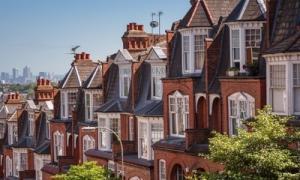
31 May, 2013/ by Homeward Legal /Buyer, First Time Buyer, Sale & Purchase
It looks as if house prices are continuing to move upwards in most parts of the country.
The latest figures from both the Land Registry and Nationwide Building Society confirm that prices are generally continuing to rise.
The Nationwide says that the typical UK home is now worth £167,912, an increase of 0.4% during May and 1.1% higher than in May 2012.
This trend is confirmed by the land registry. Their house price index figures up to the end of April also showed a 0.4% monthly increase.
Robert Gardner, Nationwide's Chief Economist, said:
“ …The three month on three month measure of house prices, which is a smoother measure of the underlying trend, has been in positive territory since October last year. The annual rate of house price growth also ticked up to 1.1% in May - the fastest pace since November 2011.”
Signs of growth in the housing market
He also pointed out that a number of other measures of housing market activity have also started to move higher. In the first four months of 2013 the number of property transactions was running at around 5% above the monthly average prevailing in 2012. The number of mortgage approvals for house purchase in the first quarter of 2013 was also around 4% above last year's monthly average.
Perhaps the recent news that the UK has not returned to recession has given buyers more confidence. There has also been an increase in the availability of mortgage finance, partly as a result of policy measures, such as the government's Funding for Lending Scheme. Lending rates have fallen back towards all-time lows in recent months.
Uneven picture across the country
Looking at the land registry's detailed report, the picture across the country is very uneven. Although central London continues to show marked increases, property prices across much of southern England have only seen more modest increases, if at all. North of a line roughly from the Mersey to the Humber prices seem to be static or falling.
The situation in Wales looks very mixed. For instance why have prices in the County of Ceridigion (covering Cardigan and Aberystwyth) shot up by 8.3% since last year, while neighbouring Pembrokeshire experienced a drop of 3.8%? Merthyr Tydfil experienced strong monthly growth with an increase of 7.2 %, while nearby Rhondda Cynon Taff saw a monthly price fall of -3.0%.
Even in the Greater London area there are wide variations. Prices in the borough of Camden have surged up by 11.8% over the last year, but in Islington they showed a slight drop of -0.6% during April. Other boroughs such as Hackney, Merton and Wandsworth have seen rises in excess of 10%, while growth in other outer London areas has been much more modest.
London Overground could be causing a rise in house prices
One factor which may be influencing house prices in some parts of the Capital is the completion of the last link in the London Overground railway. This was completed towards the end of last year, when Surrey Quays and Queen's Road Peckham were linked to Clapham Junction.
The new orbital route is the final stage in a process that has seen some rather forgotten London rail routes linked up, rebranded and radically improved over the past six years. Where there used to be many different lines, there is now one clearly defined service. Modern trains have replaced antiquated suburban stock.
A quick glance at London's railway map shows most surface lines running into central London like spokes in a wheel. Even the tube lines just cross the centre from one side to the other, and then run out to far-flung suburbs.
This has meant that while it was fairly easy to commute by train into central London from the suburbs, it was much harder to go ‘round the corners.' But in recent years the pattern of commuting has changed, with the development of such areas as the Docklands and more firms moving out of central locations.
Londoners can now zip round the edge of the city quickly
The Overground now provides a useful route which connects many parts of London where in the past it would be necessary to travel into the centre and out again, or use several slow buses. Boris Johnson, Mayor of London, says “This fantastic orbital railway - the M25 of rail - provides Londoners with the ability to zip around the edge of the city quickly and easily."
Better transport connections often lead to increased property prices. Agents are already reporting increased interest in homes near Overground routes. Demand is coming both from people wanting to move out from very expensive accommodation in central London and people fed up with a long commute from distant suburbs who find they can still afford a reasonable size home in a previously unfashionable area.
Areas served by the Overground are also likely to be popular with buy-to-let purchasers. Such areas will be likely to attract good-class renters, as well as giving the prospect of capital growth in years to come.
It is noticeable from the land registry's figures that homes in some of the east London areas already served by the Overground, such as Hackney, have already seen substantial price increases in the last year.
Some agents are predicting that this trend will spread especially to South-east London, as the benefits of the new service become apparent.
Homeward Legal's London focused property lawyers have also noted an upward trend in activity.
